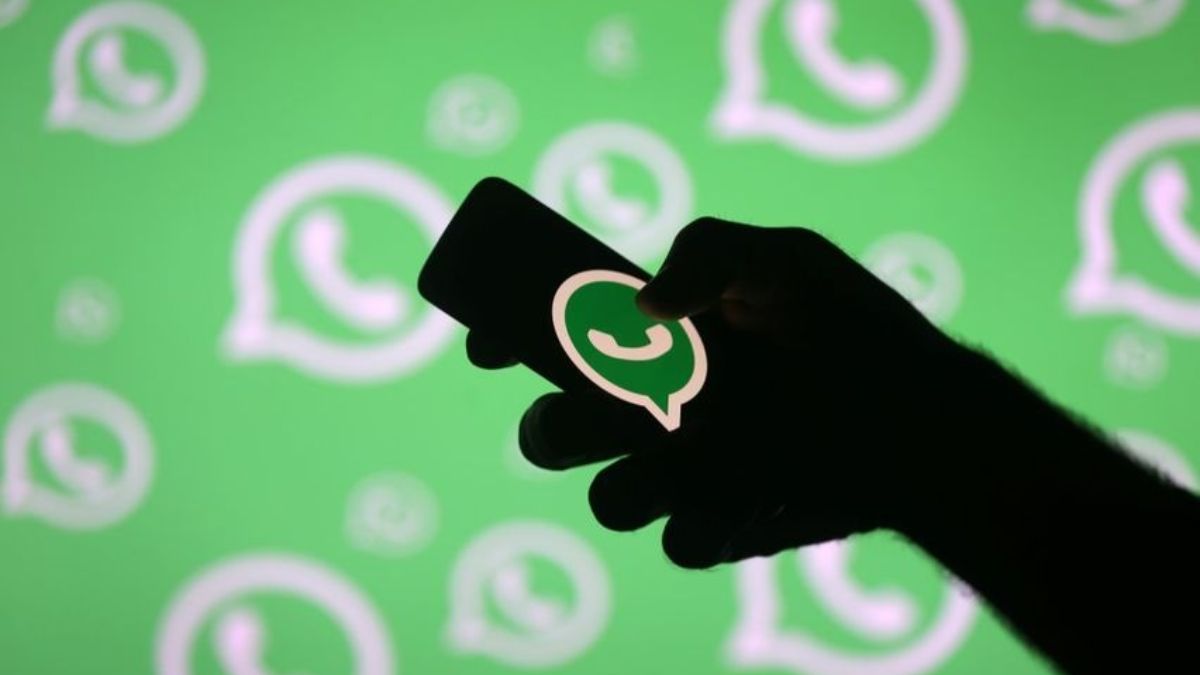Apple WWDC 2023: XR Headset, iOS 17 and more to be revealed this Monday! Everything we know so far..

Apple Inc. is set to host its highly anticipated product launch event on Monday, marking the company’s most significant release in almost ten years. During the event, the technology giant will unveil its first major new product category since the introduction of the Apple Watch, along with several new Mac models and software upgrades across its platforms. The event will commence at 10 a.m. PT/1 p.m. ET on Monday, June 5th, from Apple’s campus in Cupertino, California.
The main attraction of the event will be an advanced headset that combines both virtual and augmented reality, expected to be named either the Reality Pro or XR Pro. Alongside the headset, Apple will introduce a fresh xrOS operating system specifically designed for this device.
Additionally, attendees can anticipate the unveiling of new Mac laptops and desktops, as well as software upgrades such as watchOS 10, iOS 17, iPadOS 17, and macOS 14. Apple will also showcase enhancements to its services, particularly those related to fitness, health, and finance, while emphasizing the seamless integration of its devices to create a cohesive Apple ecosystem experience.
In recent months, Bloomberg News has provided insights into Apple’s upcoming products for the Worldwide Developers Conference. Drawing from these reports and information from insiders, here is a summary of what can be anticipated from each of the products:
Mixed-Reality Headset and xrOS:
- Apple’s inaugural headset will be an ultra-high-end device crafted from a combination of glass, carbon fiber, and aluminum. Resembling advanced ski goggles, it will introduce a novel magnetic charging system for power. Its front will feature a curved design housing an external display to showcase the wearer’s facial expressions and eyes. Additionally, the headset will incorporate multiple external cameras to facilitate video pass-through, depth sensing, and hand control.
- The device’s primary functions will revolve around communication, video consumption, wellness, gaming, and productivity. Described by one team member as both a “status symbol” and the “future of the computer,” this product seamlessly merges augmented reality (AR) and virtual reality (VR) capabilities. Inside the headset, vivid 4K screens will power the immersive VR experiences, while the video pass-through mode will enable AR functionality. Similar to the Digital Crown found on the Apple Watch, the headset will include a control mechanism for users to switch effortlessly between AR and VR modes. When in VR mode, users will be fully engrossed in a virtual environment, whereas in AR mode, content and applications will blend with the real-world surroundings, providing a mixed reality experience.
- The forthcoming headset will rely on an M2 chip and boast 16GB of RAM, delivering powerful performance. To accommodate its power needs, the headset will incorporate an external battery pack, resembling an enlarged version of the MagSafe Battery Pack for iPhones. This pack will connect to the headset via a wire, while a magnet and clockwise twist mechanism will secure it firmly in place during use. Due to the high power consumption, the headset’s battery life is projected to last approximately two hours per charge.
- The user interface of the headset will feature a combination of eye and hand control, allowing users to highlight items by looking at them and selecting them with a pinch gesture. Siri will also be integrated into the device. Equipped with an array of microphones and speakers positioned near the temples, the headset will rely on AirPods to provide enhanced spatial audio.
- Apple aims to price the device around $3,000, with a focus on offering a competitive price rather than maximizing profits. This strategy ensures that the product remains accessible to a wider market. Initially, Apple plans to introduce the headset in the United States, estimating sales of approximately 900,000 units in the first year. The company anticipates a slow start in terms of sales but recognizes the potential of the device, similar to the impact the Apple Watch had. However, the high price and unestablished market pose risks to Apple’s reputation with this endeavor.
- Although the headset will be unveiled on Monday, it will not be available for purchase until several months later. Apple’s internal discussions have revolved around potential release dates, ranging from after the launch of the iPhone 15 to December or even early 2024. Various trademarked names have been considered, including Reality Pro, Reality One, XR Pro, while the operating system itself will be called xrOS.
- To provide hands-on experiences with the device, Apple has constructed a dedicated structure at the Apple Park campus. This venue will host controlled demos for selected attendees and media during the conference. Additionally, an area near the employee fitness center, specifically near the basketball courts, has been set up for demonstrations. Apple also plans to conduct further demos throughout the summer. During these showcases, the company will emphasize the immersive potential of FaceTime in virtual reality, Apple TV content, and gaming experiences.
- The introduction, demos, and sales process of the headset will prominently feature a snap-in prescription lens system. Since the device is too slim to accommodate regular glasses underneath, this lens system will be crucial for users requiring prescription eyewear.
- Apple is also engaged in discussions regarding the need to inform potential customers with specific health conditions about the potential impacts of augmented reality (AR) and virtual reality (VR) on their well-being. Individuals with conditions such as Meniere’s Disease, previous traumatic brain injuries, post-concussion syndrome, migraines, and vertigo may be advised not to purchase or use the device due to potential health risks.
- During the DVT (Design Validation Testing) phase, some testers have reported instances of the product overheating. When the headset is turned on, users will have the option to sync their Apple account data from an iPhone or download it from iCloud. The device will present an iPad-like home screen comprising icons and widgets, enabling users to run multiple apps simultaneously in a spatial environment. Apps can be positioned in specific physical spaces, such as a living room, and when users re-enter that space, their previous workspace will be restored.
- The headset will offer a wide range of familiar apps found on the iPad and iPhone, including Books, Camera, Contacts, FaceTime, Files, Freeform, Home, Mail, Maps, Messages, Music, Notes, Photos, Reminders, Safari, Stocks, TV, and Weather. Additionally, there will be a new Wellness app with a focus on meditation and a sports viewing portal. Apple is also developing a Fitness workout app specifically for the device.
- To ensure a smooth app transition, the headset will be compatible with the vast majority of existing third-party iPad apps available on the App Store, requiring little to no extra work or minor modifications. Apple will provide developers with a software development kit and a simulator on Mac to facilitate the creation of optimized apps.
New Macs and macOS 14:
- Apple is gearing up to dedicate a significant portion of time to the Mac lineup during WWDC 2023, building on their previous introduction of the redesigned 13-inch MacBook Air at the developer conference. In line with their plans, Apple is considering unveiling a fresh 15-inch MacBook Air, possibly during the event. The upcoming model will retain the aesthetic of the current MacBook Air but will feature a larger form factor. Initially, Apple had intended to release this particular device alongside its smaller counterpart last year.
- The technology giant is in the final stages of preparing for the launch of refreshed models in the Mac Studio lineup, which will be available in M2 Max and M2 Ultra configurations. These new configurations, codenamed Mac 14,13 and Mac 14,14 (or J475), will replace the M1 Max and M1 Ultra models from last year. Recent tests have revealed that both the new machines and their chips are being put through their paces. The M2 Max chip is identical to the one featured in the latest 14-inch and 16-inch MacBook Pros, while the M2 Ultra chip will be an entirely new addition. The M2 Ultra chip will come equipped with 24 CPU cores (16 high-performance cores and 8 efficiency cores) and will offer up to 76 graphics cores. Apple is also planning to provide options for 64GB, 128GB, and 192GB of RAM.
- Furthermore, there is a possibility that the M2 Ultra chip will also be incorporated into the Mac Pro, as Apple decided to halt the development of a more powerful chip that would have occupied the top-tier position in its chip lineup. This decision was made to double the performance of the Ultra component. Although it is unlikely that these machines will be discussed, Apple is actively working on M3 versions for various other devices such as the MacBook Air, entry-level 13-inch MacBook Pro, high-end MacBook Pros, and iMac.
- In terms of the operating system, the upcoming Mac OS, codenamed Sunburst, is not expected to bring significant changes this year. Instead, it will focus on ensuring compatibility with new features being introduced in iOS 17 and iPadOS 17.
iOS 17 and iPadOS 17:
- In the upcoming iOS 17, known as Dawn, there will be a new feature for the iPhone that resembles a smart display mode when the device is locked and placed horizontally. This mode will provide an interface that showcases upcoming calendar events, notifications, and other snippets of information. Additionally, there will be a dedicated journaling app designed for users to take notes and share updates with friends about their activities, such as bike rides. This app will enable users to keep track of their emotions and moods, and it will utilize the iPhone’s location services extensively.
- As Apple expands its presence in the financial services sector, the Wallet app will receive an upgrade. This update may involve deeper integration with third-party credit cards, allowing users to view balance information similar to the Apple Card experience.
- Enhancements related to the upcoming Apple headset will be introduced to SharePlay, enabling improved functionality. Additionally, AirPlay will be enhanced to facilitate content streaming to TVs and speakers that are not owned by the user, such as those found in hotels.
- The Health app will see updates, including the addition of features for logging moods and managing vision issues. Moreover, the Health app will make its debut on the iPad for the first time.
- Apple has already unveiled an array of new accessibility features for iOS 17, including a redesigned interface with larger controls and an AI-powered voice replication feature. As usual, the update will also include performance improvements and general bug fixes.
watchOS 10:
- Apple is reintroducing widgets to the Apple Watch and incorporating them as a prominent feature in the new operating system. These widgets will resemble the ones found on the iOS and iPadOS home screens, enabling users to swipe through various information such as weather updates, stock tickers, and upcoming calendar appointments.
- To enhance user experience, Apple is modifying certain button functionalities on the Apple Watch.
- Specifically, the Digital Crown will now open the new widgets interface instead of directly accessing the standard home screen app array. This change aims to streamline navigation and make widgets more easily accessible on the Apple Watch.
(With inputs from Bloomberg)
Download The Mint News App to get Daily Market Updates & Live Business News.
Updated: 03 Jun 2023, 04:15 PM IST

Atul Tiwari is a seasoned journalist at Mumbai Times, specializing in city news, culture, and human-interest stories. With a knack for uncovering compelling narratives, Atul brings Mumbai’s vibrant spirit to life through his writing.





